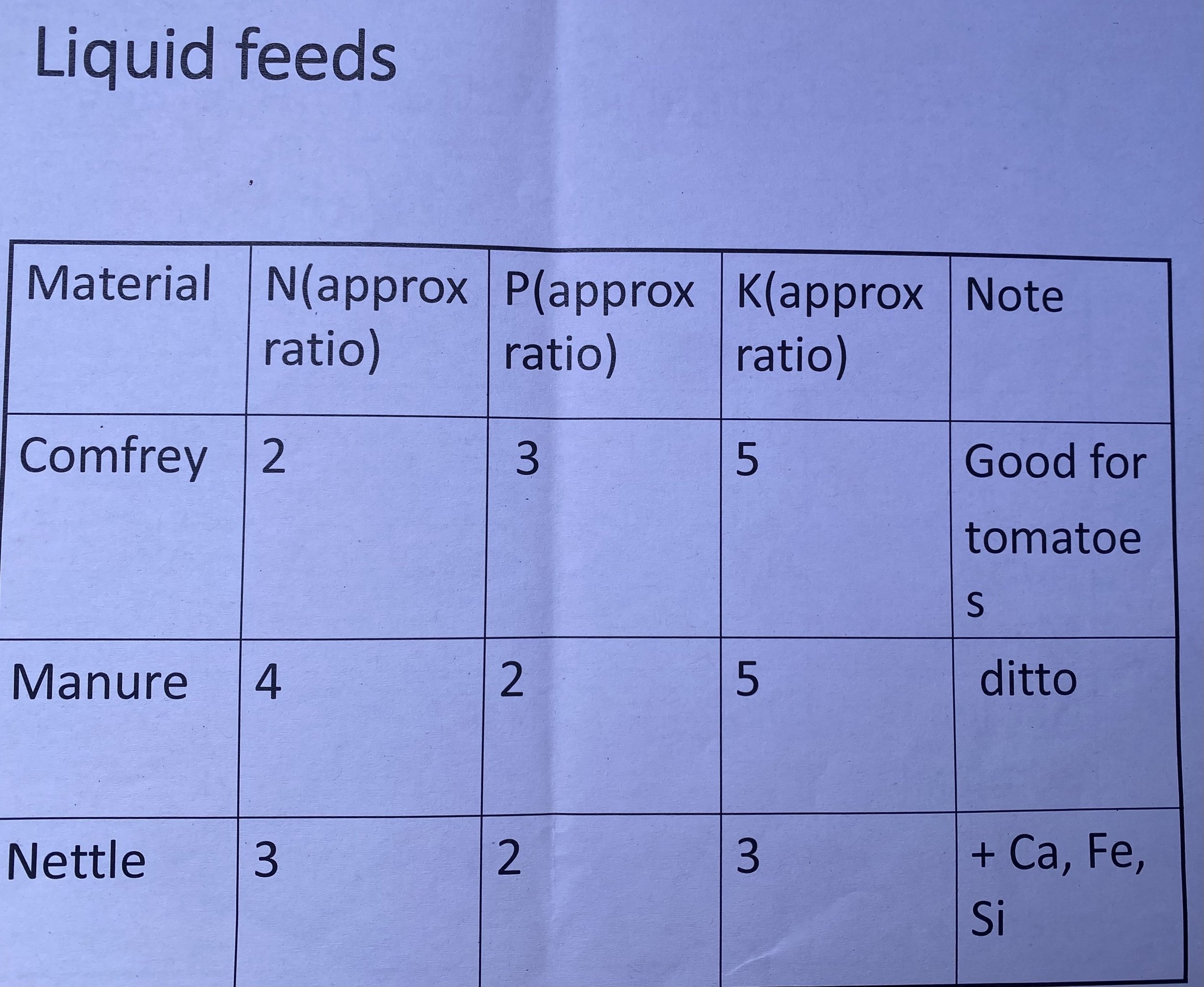Home Made Fertilisers – Why gardeners should love comfrey and nettles
Comfrey, Nettle and Seaweed Brew
Once established and beginning to produce some of your crops may benefit from the addition of a liquid fertiliser. Forget about your (artificial) 10-10-20 make your own N and K!
Organic gardeners only use fertilisers which are derived from animal or vegetable material and not manufactured artificial fertilisers. Feeding the soil that feeds the plant is one of the most basic principles of organic growing. In organic gardening the main aim is to be constantly improving soil fertility by the addition of farmyard manure, garden compost and green manures, however it can take a few years for soil to reach a high level of fertility and the following home made organic fertilisers can help bridge the gap. Of course there are organic fertilisers that can be bought e.g. Hoof & Horn, Blood, Fish & Bonemeal, Seaweed extracts etc. but there are some simple and effective fertilisers which you can make at home.
Liquid Manure or “Black Jack”: This is a useful general-purpose fertiliser and is simply made by suspending a sack of well-rotted farmyard manure in a barrel of rainwater. Leave for about ten days, stir before use and dilute to the colour of weak tea befoe using to water plants.
Comfrey: Comfrey is a deep-rooting hardy perennial plant and an excellent source of liquid fertiliser. Comfrey leaves are extremely rich in potash(K), ideal for tomatoes when flowering or fruiting and also contain useful levels of nitrogen and phosphate. No organic garden should be without it’s comfrey corner- half a dozen plants would be sufficient for a small garden. Established plans can be cut 3-4 times a year. The plants can last up to 20 years.
Wilted comfrey leaves can be used as a mulch around plants and can be used to line potato and tomato trenches or to mulch soft fruit. Two or three layers of leaves can be worked into a compost heap to stimulate bacterial action. Be careful not to compost in bulk though as you can end up with a slimy mass.
Concentrated Liquid Comfrey: To make this you will need a suitable container. Either a large barrel, rain butt or rubbish bin raised a short distance off the ground on bricks, will suffice. Insert a tap near the bottom or drill a 1cm hole in the base, standing a jar beneath the hole to collect the liquid extract. Stuff the container with fresh or wilted Comfrey leaves and weigh down with a heavy board to compress them. Cover with a lid to keep flies out. After about ten days the concentrate will start to drip through. Add more leaves as required. The concentrate will keep for several months if stored in a jar in a cool, dark place. Before use dilute 10 to 20 times with water. Be careful not to get it on your skin and be warned it can be smelly.
Comfrey Liquid is a little easier to make. Ideally fill a 50 l container half with comfrey leaves, top up with water and let ferment (2-4 weeks) until it becomes a smelly brew, thin 1 to 10 in your watering can and apply once a week.
Nettle Liquid: This is another useful home-made general purpose fertiliser high in Nitrogen! Make it in the same way as comfrey liquid (above). Make sure to pick the nettles before they go to seed. Dilute 1 to 10.
Variation: You can mix comfrey and nettle leaves in a barrel.
Tip: Homemade liquid fertilisers work best if plants set fruit or cabbages start building heads or roots swell.


